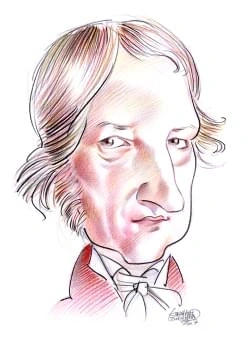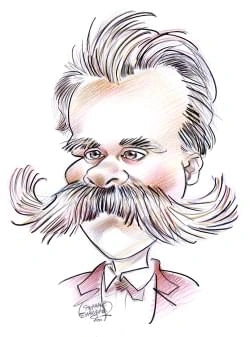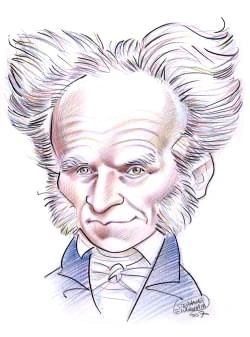203 résultats pour "bird"
-
Wisconsin (state) - USA History.
-6° C (22° F) in the southeast, along the Lake Michigan shore. During winter extremely cold weather persists for several weeks at a time. C2 Precipitation Average annual precipitation ranges from 700 to 800 mm (28 to 32 in). Rainfall is generally heaviest during the spring and summer, and snowfall is generally moderatein the south, but can be quite heavy in the north. Thunderstorms, sometimes accompanied by devastating tornadoes, are common in spring and summer, particularly inthe southern part...
-
Arkansas - geography.
temperature rises to the upper 30°s C (lower 100°s F). C2 Precipitation Arkansas receives about 1,000 to 1,300 mm (about 40 to 50 in) of precipitation a year, and some areas receive even more. Most of the rain comes during winter andspring and at times is so heavy as to cause flooding. Snow is rare in the south but amounts to more than 250 mm (10 in) a year in the mountains. C3 Growing Season Arkansas has a long growing season. It averages 211 days for the state as a whole and ranges from 241...
-
Arkansas - USA History.
temperature rises to the upper 30°s C (lower 100°s F). C2 Precipitation Arkansas receives about 1,000 to 1,300 mm (about 40 to 50 in) of precipitation a year, and some areas receive even more. Most of the rain comes during winter andspring and at times is so heavy as to cause flooding. Snow is rare in the south but amounts to more than 250 mm (10 in) a year in the mountains. C3 Growing Season Arkansas has a long growing season. It averages 211 days for the state as a whole and ranges from 241...
-
Republic of Indonesia - country.
Mahakam in East Kalimantan and the Martapura and Barito in South Kalimantan. Most of these rivers originate in the island’s central massif (mountain mass) and meander through extensive swamps as they approach the coast. Settlements such as Samarinda and Banjarmasin cluster along the rivers, which serve ascommunication routes into the interior. The largest rivers on Sumatra drain from west to east into the Strait of Malacca. In the north, the Asahan River once linked trade between the Batak peo...
-
Puerto Rico - geography.
the length of the day remains fairly constant throughout the year. San Juan has a mean July temperature of 28°C (83°F) and a mean January temperature of 25°C (77°F). The average temperature of the seawater surrounding theisland is 27°C (81°F), with little variation during the course of the year. The entire island is cooled by the trade winds from the northeast. This air also contains much water vapor. As the air is forced to rise over the mountains, it becomescooler and the water vapor condenses...
-
Iran - country.
Zagros mountains. In the more arid central part of the country, wild pistachio and other drought-resistant trees grow in areas that have not been disturbed by humanactivity. Tamarisk and other salt-tolerant bushes grow along the margins of the Dasht-e Kavir. A wide variety of native mammals, reptiles, birds, and insects inhabit Iran. Many species of mammals—including wolves, foxes, bears, mountain goats, red mountainsheep, rabbits, and gerbils—continue to thrive. Others—including Caspian tigers,...
-
Washington (state) - geography.
The crest of the Cascade Range divides Washington into two distinct climatic regions. The area west of the Cascades, which is exposed throughout the year to rain-bearing winds from the Pacific Ocean, has a temperate marine type of climate that is characterized by mild wet winters and cool summers. The Cascades prevent themoist air blowing in from the Pacific from reaching eastern Washington. The Rocky Mountains on the eastern border also represent a climatic barrier. As a result, thesevere winte...
-
Washington (state) - USA History.
The crest of the Cascade Range divides Washington into two distinct climatic regions. The area west of the Cascades, which is exposed throughout the year to rain-bearing winds from the Pacific Ocean, has a temperate marine type of climate that is characterized by mild wet winters and cool summers. The Cascades prevent themoist air blowing in from the Pacific from reaching eastern Washington. The Rocky Mountains on the eastern border also represent a climatic barrier. As a result, thesevere winte...
-
-
Montana - geography.
(191 sq mi), is Montana’s largest lake, and the largest natural freshwater lake in the contiguous states west of the Mississippi River. C Climate Climatic regions in Montana coincide roughly with the two major physiographic regions. In western Montana, as compared with the eastern plains area, winters tend tobe milder while summers are cooler. Precipitation is more evenly distributed throughout the year in the west, and it is cloudier and somewhat more humid in all seasons.In addition, the grow...
-
Montana - USA History.
(191 sq mi), is Montana’s largest lake, and the largest natural freshwater lake in the contiguous states west of the Mississippi River. C Climate Climatic regions in Montana coincide roughly with the two major physiographic regions. In western Montana, as compared with the eastern plains area, winters tend tobe milder while summers are cooler. Precipitation is more evenly distributed throughout the year in the west, and it is cloudier and somewhat more humid in all seasons.In addition, the grow...
-
Oregon - geography.
B Rivers and Lakes The Columbia River forms most of the Oregon-Washington boundary, and with its tributaries this great river drains a large portion of Oregon. From the point where theColumbia first touches the state, at Wallula Gap, the river runs in a shallow gorge, deepening as it approaches the Cascades. This part of the river once had manyrapids and falls, but is now navigable by large vessels because of dams and locks that have been built along much of its length. An important tributary o...
-
Oregon - USA History.
B Rivers and Lakes The Columbia River forms most of the Oregon-Washington boundary, and with its tributaries this great river drains a large portion of Oregon. From the point where theColumbia first touches the state, at Wallula Gap, the river runs in a shallow gorge, deepening as it approaches the Cascades. This part of the river once had manyrapids and falls, but is now navigable by large vessels because of dams and locks that have been built along much of its length. An important tributary o...
-
Antigua et Barbuda 1994-1995
Quinze ans après que son père Vere Bird lui avait officieusement laissé le pouvoir comme adjoint,...
Antigua et Barbuda 1994-1995 Quinze ans après que son père Vere Bird lui avait officieusement laissé le pouvoir comme adjoint, Lester Bird est devenu Premier ministre en titre, au terme des élections législatives du 8 mars 1994, gagnées face à une poussée de l'opposition contre la dynastie des Bird. Des manifestations et...
-
La Banque Mondiale face à la crise alimentaire de 2008 (économie - politique)
étant donnée qu’elle emprunte elle-même des fonds sur le marché financier à des taux plus faibles que d’autres institutions. Elle prend par ailleurs en charge ses propres coûts de fonctionnement et n'a pasà rechercher des sources de financement extérieures afin de couvrir ses frais généraux. La mobilisation des fonds qui servent au fonctionnement de la Banque mondiale, et la façon dont elle s’en sertpour remplir sa mission sont cités ci-dessous : • Mobilisation de fondsLes prêts que la BIRD ac...
-
Tree - biology.
The major parts of a tree are its roots, trunk, leaves, flowers, and seeds. These components play vital roles in a tree’s growth, development, and reproduction. A Roots Trees are held in place by anchoring organs called roots. In addition to anchoring the tree, roots also absorb water and minerals through tiny structures called roothairs. From the roots the water and mineral nutrients are carried upward through the wood cells to the leaves. Although the internal structure of most kinds of roots...
-
Amphibian (animal) - biology.
strong enough to kill potential predators. C Hearing, Vision, and Vocalizations Amphibians rely on their senses to find food and evade predators. Amphibians lack external ears but have well-developed internal ears. Hearing is most acute in frogs,which typically have a middle ear cavity for transferring sound vibrations from the eardrum, or tympanum, to the inner ear. Frogs and toads also use their keen hearingin communicating with one another. Using a true voice box, or larynx, and a large, exp...
-
-
Bear - biology.
programs sponsored by zoos or other breeding centers have attempted to breed giant pandas in captivity, although most of these programs have proved unsuccessful.Among the difficulties faced by captive breeders has been the problem of encouraging a female giant panda to mate with a selected male during the two to three daysof the year when she is most fertile, a period known as estrus. B Spectacled Bear Creamy-white rings surrounding the eyes give the spectacled bear its name. Its shaggy coat of...
-
New Brunswick - Geography.
Grand Lake, the largest lake in New Brunswick, is in the lowlands, east of Fredericton. Most other lakes are located in the northern and southwestern parts of NewBrunswick. D Climate New Brunswick has a continental climate that is moderated by maritime influences in the coastal areas. As a result, coastal regions are slightly warmer in the winter andslightly cooler in the summer than are interior regions. Annual temperature variations are large, with the January mean usually at least 25 to 28°C...
-
New Brunswick - Canadian History.
Grand Lake, the largest lake in New Brunswick, is in the lowlands, east of Fredericton. Most other lakes are located in the northern and southwestern parts of NewBrunswick. D Climate New Brunswick has a continental climate that is moderated by maritime influences in the coastal areas. As a result, coastal regions are slightly warmer in the winter andslightly cooler in the summer than are interior regions. Annual temperature variations are large, with the January mean usually at least 25 to 28°C...
-
Saskatchewan (province) - Geography.
The length of the frost-free season varies within the province. In the southwest, particularly in the valley lands along the South Saskatchewan River, the frost-freeperiod ranges from 150 to 160 days. Regina enjoys about 123 frost-free days, and Saskatoon has about 111. The far north has only from 85 to 95 frost-free days. One important characteristic of Saskatchewan’s climate is the great variability in temperature and precipitation from year to year, which is often critical for agriculture.The...
-
Saskatchewan (province) - Canadian History.
The length of the frost-free season varies within the province. In the southwest, particularly in the valley lands along the South Saskatchewan River, the frost-freeperiod ranges from 150 to 160 days. Regina enjoys about 123 frost-free days, and Saskatoon has about 111. The far north has only from 85 to 95 frost-free days. One important characteristic of Saskatchewan’s climate is the great variability in temperature and precipitation from year to year, which is often critical for agriculture.The...
-
Michigan - geography.
The interior location of Michigan in the northern part of North America results in a continental climate, characterized by four definite seasons with moist, mild to hotsummers and snowy, cold winters. Winds off of Lakes Michigan and Superior in winter create heavy snow accumulations in nearby areas. The tempering effects of LakeMichigan account for the presence of the state’s famous fruit-growing belt along the lake’s shore. Since the water is colder than the land in spring, the westerly windspa...
-
Michigan - USA History.
The interior location of Michigan in the northern part of North America results in a continental climate, characterized by four definite seasons with moist, mild to hotsummers and snowy, cold winters. Winds off of Lakes Michigan and Superior in winter create heavy snow accumulations in nearby areas. The tempering effects of LakeMichigan account for the presence of the state’s famous fruit-growing belt along the lake’s shore. Since the water is colder than the land in spring, the westerly windspa...
-
Native American Art
I
INTRODUCTION
Native American Art, the visual works crafted by indigenous people of North America, starting after their arrival on the continent thousands of years ago and continuing
until the present.
artists in the Ohio area cut delicate flat forms from sheets of mica in the shape of birds, human figures, and large hands. They also carved quite natural-looking birdsand animals on stone platform pipes. These figures sat on the pipe’s flat base, or platform, and on some pipes they were part of the pipe bowl. Prominent people ofthese cultures were buried with a wealth of ornaments, such as jewelry of shells and copper, and headdresses elaborated with animal forms. The period of Mississippian cu...
-
-
Québec - Geography.
facilities. Tributaries south of the St. Lawrence include the Richelieu, the Saint-François, and the Chaudière rivers, which are only a few hundred kilometers long. TheRimouski and Matane rivers, also south of the St. Lawrence, are popular areas for recreation and salmon fishing. In the Canadian Shield, the longest rivers are theRupert, Eastmain, Grande Baleine, and La Grand-Rivière, which is the site of a huge hydroelectric complex. C Coastlines Québec has two systems of saltwater coastline. O...
-
Québec - Canadian History.
facilities. Tributaries south of the St. Lawrence include the Richelieu, the Saint-François, and the Chaudière rivers, which are only a few hundred kilometers long. TheRimouski and Matane rivers, also south of the St. Lawrence, are popular areas for recreation and salmon fishing. In the Canadian Shield, the longest rivers are theRupert, Eastmain, Grande Baleine, and La Grand-Rivière, which is the site of a huge hydroelectric complex. C Coastlines Québec has two systems of saltwater coastline. O...
-
Goose - biology.
Branta comes from a German word meaning “burned” and all of the geese in this genus have black plumage somewhere on their bodies. The brant, a sea goose that also belongs to this genus, is found on both coasts of North America. Brants are darker than barnacle and Canada geese and similar in size to the smallest Canadageese. Like the Canada and barnacle goose, the brant nests in Arctic regions. But unlike them, it winters chiefly on salt water. Instead of the white cheeks of Canadaand barnacle g...
-
Native Americans of North America.
addition to smallpox and measles, explorers and colonists brought a host of other diseases: bubonic plague, cholera, typhoid fever, scarlet fever, pleurisy, mumps,diphtheria, pneumonia, whooping cough, malaria, yellow fever, and various sexually transmitted infections. Despite the undisputed devastation wreaked on Indian populations after European contact, native populations showed enormous regional variability in their response todisease exposure. Some peoples survived and, in some cases, even...
-
Native Americans of North America - Canadian History.
addition to smallpox and measles, explorers and colonists brought a host of other diseases: bubonic plague, cholera, typhoid fever, scarlet fever, pleurisy, mumps,diphtheria, pneumonia, whooping cough, malaria, yellow fever, and various sexually transmitted infections. Despite the undisputed devastation wreaked on Indian populations after European contact, native populations showed enormous regional variability in their response todisease exposure. Some peoples survived and, in some cases, even...
-
Native American Art.
folding, braiding or weaving, could also be sewn onto the hide. The production of decorated clothing and bags increased after contact with Europeans as a greater variety of textiles and other materials became available throughtrade. Imported glass beads inspired native women, who quickly adapted quillwork techniques for the creation of beaded apparel. European curvilinear and floraldesigns of the 19th century proved as meaningful for the native women who worked with them as they were for the non...
-
Insect - biology.
they almost always have six legs. In some insects, such as beetles, the legs are practically identical, but in other insects each pair is a slightly different shape. Still otherinsects have specialized leg structures. Examples are praying mantises, which have grasping and stabbing forelegs armed with lethal spines, and grasshoppers andfleas, which have large, muscular hind legs that catapult them into the air. Mole crickets’ front legs are modified for digging, and backswimmers have hind legs de...
-
Owl - biology.
Among the largest species of typical owls are the eagle owls. They have tufts of feathers on their heads that are called “ears.” The great horned owl is the only eagleowl found in the Americas. It is about 60 cm (25 in) in length with a wingspan of 1.4 m (60 in). Numerous species of eagle owls inhabit Europe, Africa, and Asia. Mostwidely distributed is the northern eagle owl, found from Scandinavia and Spain to Japan. It is about 71 cm (28 in) long with a wingspan of about 2m (72 in). Nearly asl...
-
-
Reproduction.
plants. The male part is called a stamen. The sperm is called pollen. The female part is called a pistil.The egg grows inside the pistil. Bees, birds, and even the wind carry the pollen to the pistils. Some plant species have different male and female plants. But in many species, the male and femaleparts are on the same plant. Microsoft ® Encarta ® 2009. © 1993-2008 Microsoft Corporation. All rights reserved.
-
Animals.
All animals must breathe oxygen to stay alive. They must breathe out a waste gas called carbon dioxide. Some animals breathe through lungs. Lungs take oxygen out of air. Cattle, dogs, cats, whales, people,and other mammals breathe through lungs. Birds and reptiles also breathe air through lungs. Lungs cannot take air from water. Seals, whales, dolphins, and other mammals that live in waterbreathe through lungs. They can stay underwater a long time because they can hold their breath for along tim...
-
Monkeys.
Female monkeys usually give birth to only one baby at a time. The baby stays with its mother while itfeeds on her milk. In many species, the females stay with their mother’s family group for life. Malesoften leave their mother’s family group when they grow up. Compared to other animals, monkeys live a long time. It’s hard to know how long a monkey in the wildwill live. But some monkeys in zoos have lived to be more than 50 years old. WHAT DO MONKEYS EAT? What a monkey eats depends on the size of...
-
Bobby Jones Is First Golfer To Win Grand Slam.
so much that the dye from the red tees in his pocket bled onto his pants. Jones opened with a 71 that left him one stroke out of the lead. His second-round 73 could have been much worse had it not been for a “Lily Pad Shot” on the par-five ninth hole. Distracted by a crowd movement in the midst of his second shot, Jones topped the ball and sent it toward the pond guarding the green. Instead ofplopping into the water, the ball skidded over the water like a flat stone and landed on the bank. H...
-
Andes - geography.
smaller trees lies above the zone of rain forest. Among the smaller trees is found the wild cinchona, a source of quinine, a drug used to treat malaria. In the southernAndes, broadleaf and coniferous trees cover the lower slopes. Coniferous forests are found above 2,000 m (6,500 ft), and the timberline is generally about 3,000 m(about 10,000 ft) above sea level. Above the timberline are treeless highland meadows, but the high plateaus of the central Andes support only a sparse covering ofgrasses...
-
The Beatles - Musik.
1963 Please, Please Me Please, Please MeLove Me DoI Saw Her Standing ThereTwist and Shout 1963 With The Beatles It Won't Be LongAll My LovingPlease Mister PostmanRoll Over BeethovenI Wanna Be Your Man 1964 Meet The Beatles I Want To Hold Your HandThis Boy 1964 Something New Things We Said TodayAnd I Love Her 1964 A Hard Day's Night A Hard Day's NightCan't Buy Me LoveI Should Have Known Better 1964 Beatles for Sale I'm A LoserEight Days A WeekEverybody's Trying To Be MyBaby 1965 Help! Help!Youre...
-
The Gambia - country.
The population of The Gambia (2008 estimate) is 1,735,464, making it one of the least populous countries of Africa. Still, the country has a fairly high overall populationdensity of 174 persons per sq km (449 per sq mi), and the population is increasing at a rate of 2.7 percent a year. Banjul, formerly called Bathurst, is the capital andonly seaport. The largest city is Serrekunda, a transportation hub and commercial center. B Religion and Language The great majority of the people of The Gambia...
-
Acid Rain.
the Adirondack Mountains of New York State, a quarter of the lakes and ponds are acidic, and many have lost their brook trout and other fish. In the middleAppalachian Mountains, over 1,300 streams are afflicted. All of Norway’s major rivers have been damaged by acid rain, severely reducing salmon and trout populations. E Plants and Animals The effects of acid rain on wildlife can be far-reaching. If a population of one plant or animal is adversely affected by acid rain, animals that feed on tha...
-
-
Virus (life science) - biology.
RNA into DNA earned them their name because this process is the reverse of the usual transfer of genetic information, from DNA to RNA.) The DNA form of theretrovirus genome is then integrated into the cellular DNA and is referred to as the provirus. The viral genome is replicated every time the host cell replicates its DNA and is thus passed on to daughter cells. Hepatitis B virus can also transcribe RNA to DNA, but this virus packages the DNA version of its genome into virus particles. Unlike...
-
Vermont - geography.
Forests cover 78 percent of Vermont. Most of the trees are deciduous, principally the maple, elm, birch, beech, oak, hickory, ash, cherry, and butternut. The state treeis the sugar maple, which provides Vermont’s famous maple syrup. Conifers are common in some mountain areas and include mainly the white pine, red spruce,hemlock, and cedar. A great variety of ferns have been found within the state. Among the more common wildflowers that grow in Vermont are anemones, arbutuses,violets, lilacs, dai...
-
Vermont - USA History.
Forests cover 78 percent of Vermont. Most of the trees are deciduous, principally the maple, elm, birch, beech, oak, hickory, ash, cherry, and butternut. The state treeis the sugar maple, which provides Vermont’s famous maple syrup. Conifers are common in some mountain areas and include mainly the white pine, red spruce,hemlock, and cedar. A great variety of ferns have been found within the state. Among the more common wildflowers that grow in Vermont are anemones, arbutuses,violets, lilacs, dai...
-
Connecticut - geography.
The state’s shoreline, when all the bays and inlets are taken into account, has a total length of 995 km (618 mi). The coastline is deeply indented by long estuaries androcky inlets, and there are many sandy beaches and stretches of tidal marsh. There are several good harbors along the coast, the most important of which is at NewHaven. A few small islands lie offshore in Long Island Sound. D Climate Connecticut has long, hot summers and cold winters. The climate does not vary greatly from place...
-
Connecticut - USA History.
The state’s shoreline, when all the bays and inlets are taken into account, has a total length of 995 km (618 mi). The coastline is deeply indented by long estuaries androcky inlets, and there are many sandy beaches and stretches of tidal marsh. There are several good harbors along the coast, the most important of which is at NewHaven. A few small islands lie offshore in Long Island Sound. D Climate Connecticut has long, hot summers and cold winters. The climate does not vary greatly from place...
-
New Hampshire - geography.
Washington. D1 Temperature The coldest parts of the state are in the White Mountains and the extreme north. Average January temperatures range from about -11° C (about 12° F) along theCanadian border to about -3° C (about 26° F) along the coast. July temperatures range from about 17° C (about 63° F) in the mountains to about 21° C (about 70° F)in the south. D2 Precipitation Precipitation is evenly distributed throughout the year over most of the state. However, the higher peaks of the White Mo...
-
New Hampshire - USA History.
Washington. D1 Temperature The coldest parts of the state are in the White Mountains and the extreme north. Average January temperatures range from about -11° C (about 12° F) along theCanadian border to about -3° C (about 26° F) along the coast. July temperatures range from about 17° C (about 63° F) in the mountains to about 21° C (about 70° F)in the south. D2 Precipitation Precipitation is evenly distributed throughout the year over most of the state. However, the higher peaks of the White Mo...
-
Bolivia - country.
E Plants and Animals Because of the wide variations in elevation, plant and animal species of nearly every climatic zone are found in Bolivia. A coarse grass, called ichu, grows on the largelybarren high plateau in the west. Para rubber trees, more than 2,000 species of hardwood trees, and vanilla, sarsaparilla, and saffron plants are common in the tropicalforests of the east. The llama, found chiefly on the Altiplano, is an efficient beast of burden. Alpacas and vicuñas also inhabit the platea...
-
-
British Columbia - Geography.
hemlock, Douglas fir, Sitka spruce, and various cedars, grows rapidly in the mild, wet climate and produces the largest trees in Canada. In the dry lowlands of thesouthern and central interior, ponderosa and lodgepole pines, aspen, and bunchgrass are characteristic. Spruce dominates the Prince George region. Prairie grasses andstands of aspen are found in the northeastern corner of the province. At elevations higher than about 1,800 m (about 6,000 ft), an alpine vegetation of shrubs, mosses,and...
-
British Columbia - Canadian History.
hemlock, Douglas fir, Sitka spruce, and various cedars, grows rapidly in the mild, wet climate and produces the largest trees in Canada. In the dry lowlands of thesouthern and central interior, ponderosa and lodgepole pines, aspen, and bunchgrass are characteristic. Spruce dominates the Prince George region. Prairie grasses andstands of aspen are found in the northeastern corner of the province. At elevations higher than about 1,800 m (about 6,000 ft), an alpine vegetation of shrubs, mosses,and...
}})








